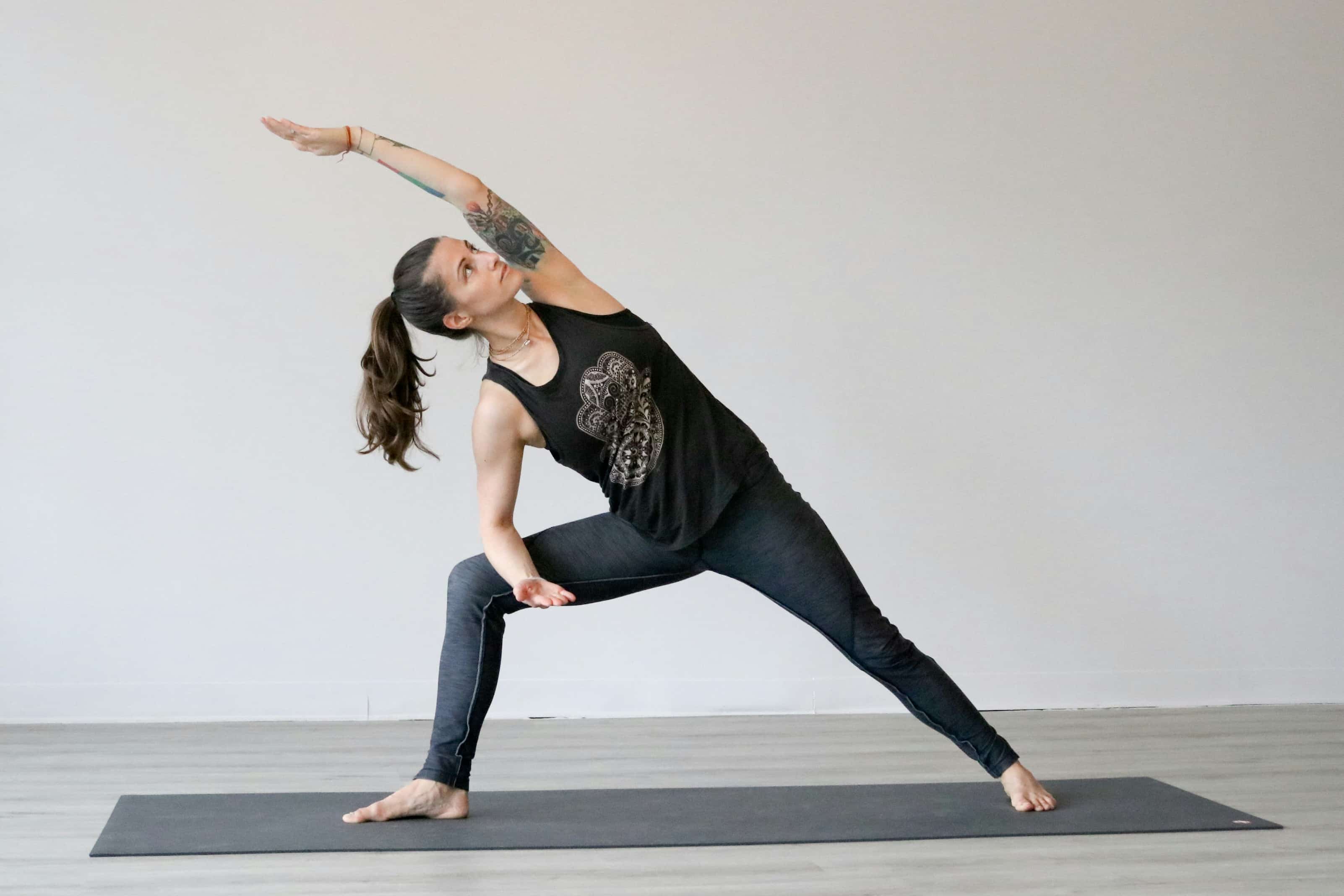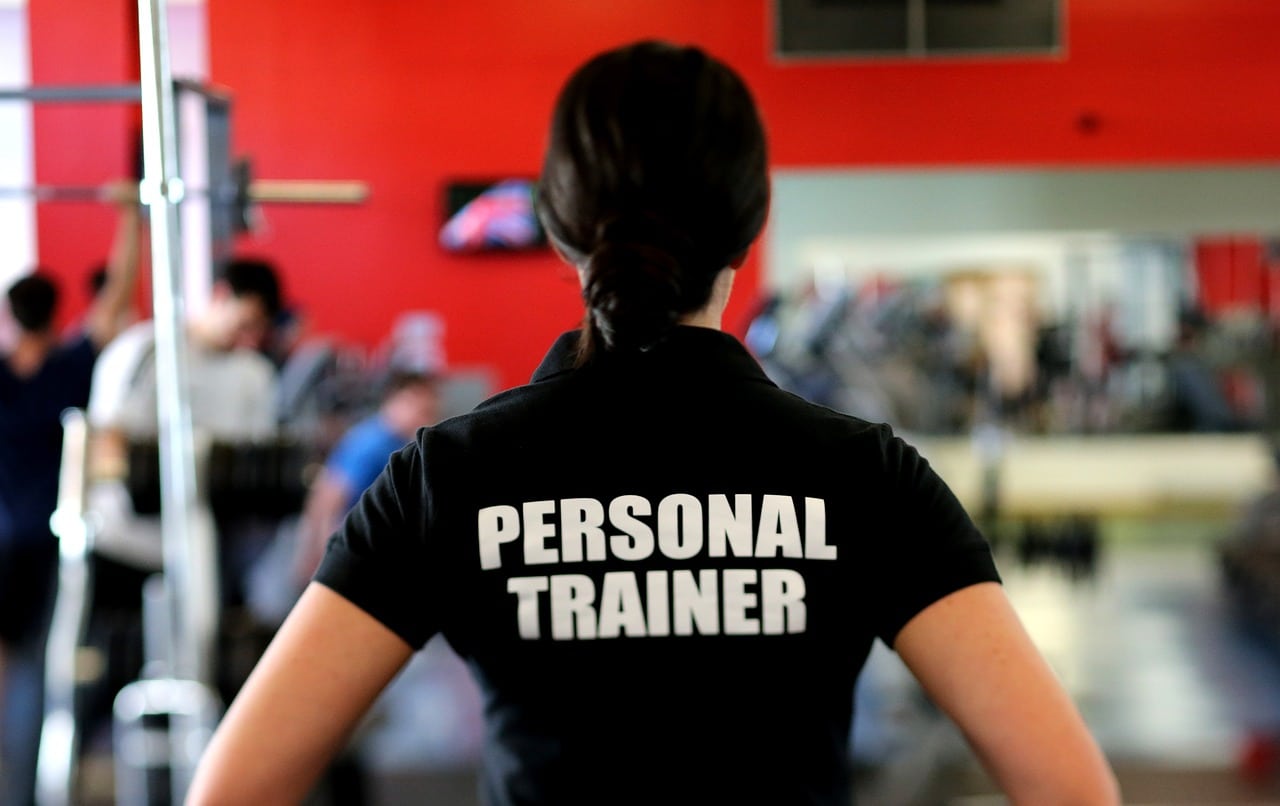“To be honest, I’m afraid of working out in the gym.”
Chances are, as a personal trainer, you’ve had a client (or two) admit their fears about going to the gym after coming up with a suitable training program for them.
What do you do in such a situation? It’s a tricky one for sure. Do nothing, and their gym anxiety might get the better of them, impeding them from achieving their fitness goals. But telling them to “just do it” won’t cut it, either.
Don’t worry. This article explores what you need to know about supporting a client dealing with “gymtimidation”—including what it is, why it occurs, and what you can do about it as a fitness coach—so they can feel comfortable about stepping into the gym.

Grow Your Income and Impact as a Personal Trainer and Board-Certified Health Coach
What Is “Gymtimidation”?
As implied by its name, the term “gymtimidation” refers to the feeling someone gets when they’re intimidated by the thought or the actual act of working out in the gym.
Oh, and just so you know: Your clients aren’t the only ones getting into a bundle of nerves about having to work up a sweat in the gym. “Gymtimidation” is a real phenomenon that affects plenty of people. In fact, a survey conducted by PureGym (on their members) found that one in four people would rather face spiders than go to the gym!
Research recently commissioned by Samsung supports this finding, with 83% of survey participants agreeing that the gym can be an intimidating experience.
But what’s up with this deep-seated fear? Both research pieces arrived at a startlingly similar list of the top causes of “gymtimidation”:
- Not knowing how to use all the equipment
- Feeling intimidated by other “experienced” gym-goers
- Visiting the gym when it’s busy (having someone else eye the equipment they’re using)
- Not having a defined workout plan
- Having to ask for help or advice
This list offers valuable insights into how you could help your client overcome their gym nerves. So, without further ado, let’s jump right into that.
#1: Walk Your Client Through Every Exercise on Their Workout Plan
Before you send your client off to clock in a solo workout session in the gym, make sure they know how to perform every exercise included in their workout program. Doing so tackles two primary causes of “gymtimidation”: #1 (not knowing how to use all the equipment) and #5 (having to ask for help or advice).
Here’s a great tip that’ll truly boost your client’s confidence in the gym: Have them set up their own equipment during their training session with you. For example, educate them on how they could adjust the bar height on the squat rack such that it’ll suit the exercise they’re performing, be it a barbell squat, overhead press, or bench press.
The same goes for machines. Get your client familiar with the different knobs and levers they could manipulate on every machine so it suits their unique body proportions and training goals.
Have your client record their preferred settings (e.g., writing it down in a notebook or taking a picture) if necessary; this will serve as their reference point when they’re in the gym without you by their side.
#2: Give Careful Thought to Your Client’s Workout Plan
While one of the most obvious solutions to fixing cause #3 of “gymtimidation” (visiting the gym when it’s busy) is asking your client to get into the gym during off-peak hours, sometimes, that’s impossible considering their schedule.
So, the next best alternative would be for you to program their workout plan in such a way that minimizes “back and forth” movement in the gym.
What does that mean, exactly?
In the simplest terms, it means you should avoid programming in supersets or “giant sets,” where they must perform several exercises—often at different machines—in consecutive order without any rest in between.
That’s because such a programming method leaves your client vulnerable to situations where their exercise equipment gets “stolen” by another gym-goer (and, in the worst-case scenario, could get your client into a nasty argument).
Another way you could minimize said “back and forth” movement?
By accounting for the proximity of various exercise equipment relative to one another when planning a client’s workout program. To illustrate, let’s say you’re designing a “push day” for your client, and you have the following exercises in mind:
- Barbell overhead shoulder press
- Arnold press
- Cable chest flys
- Dumbbell lateral raises
- Barbell bench press
- Triceps pushdown
Here’s an example of an exercise order that’ll help your client minimize movement in the gym:
- Barbell bench press (squat rack)
- Barbell overhead shoulder press (squat rack)
- Dumbbell lateral raises (free weights)
- Arnold press (free weights)
- Cable chest flys (cable machine)
- Triceps pushdown (cable machine)
Apply this to every workout you design for your client. Think about the “flow” of their workout, and make sure they “maximize” their time at any given region in the gym before moving on to another.
#3: Plan Practical Alternatives for Each Exercise
Despite your best efforts to plan the “best workout routine,” your client may still run into instances where another gym-goer is already using the piece of equipment they need to use (e.g., the ever-popular Smith Machine).
Planning is still the key here.
Instead of allowing your client to simply skip out on doing that exercise, provide them with a few alternatives that’ll target the same muscle groups but at a different machine or with another setup.
For instance, let’s say your client is used to doing hip thrusts on the Smith Machine.
Why not also teach them how to perform the exercise with a free-moving barbell? Or even better: Walk them through a complete list of exercises they could do to target their glutes, including glute-focused hip extensions, single-leg step-ups, and Bulgarian split squats.
Here’s another example. Let’s say the lat pulldown machine is occupied. Let your client know that there are many other lat-focused exercises available, such as the seated cable rows, “lats-focused” barbell rows (where their elbows are kept at around 45 degrees relative to their torso), and even the chest-supported dumbbell rows.
Look through your client’s workout plan. Make sure you list at least one alternative exercise your client could do instead if the necessary equipment is taken.
Equipping your client with this list of alternative exercises they could turn to will help them make the most of their workout session, even in a crowded gym.
#4: Encourage Your Client to Try Out Different Gyms for the “Right Fit”
There’s no denying it: Certain gyms are more welcoming than others. If your client plans to get their workouts in at a different gym than the one you’re training them in, encourage them to “shop around.”
Let them know that they should always get a good feel of a gym’s style and clientele before committing to a long-term contract.
And one of the easiest ways they could do so is by signing up for a free trial session, where a staff member tours them around the gym, which offers a peek into what it’ll be like to work out there. Have your client keep in mind the following questions as they walk around:
- Is the gym staff friendly? Do gym-goers approach them at all?
- Is the gym well maintained?
- What’s the gym’s “culture”?
- Is the gym crowded?
- Does the gym layout make sense (e.g., “chest machines” in one region, compared to one where the machines are all over the place)?
To your client, this may appear to be an unnecessarily long list of boxes that need to be ticked just to find a gym—but you should remind them that, at the end of the day, they’re investing their time, money, and energy into the fitness facility.
It’ll benefit them to be sure that it’s the best choice for them and their training goals.
#5: Educate Them on Proper Gym Etiquette
Dig deeper into cause #2 of “gymtimidation” (feeling intimidated by more experienced gym-goers), and you’ll realize a deeper underlying fear: that of being judged for doing the “wrong thing” by others.
How can you help assuage your client’s apprehension? Answer: by teaching them basic gym etiquette. Here are the top critical pointers to share:
- Put everything back where it belongs: Have your client unload the bar and re-rack all weights and dumbbells after they’re done with an exercise.
- Wipe things down after using them: Have your client wipe their sweat off machines, barbells, floor mats, and anything else they use. Even better, suggest they bring in a towel to place over benches or whichever equipment they plan on using.
- Don’t block someone else’s view of the mirror: Let your client know that they should do their best to stay out of someone’s line of sight when they’re checking out their exercise form in the mirror. In other words, performing lateral raises right in front of someone doing dumbbell presses—and looking at the mirror—isn’t recommended.
- Avoid slamming weights: It’s noisy and inconsiderate. Plus, unless the gym explicitly encourages weight-slamming, doing so would irk the gym owners as it can ruin the equipment (e.g., breaking the dumbbell heads off).
- Only “work in” with someone else when it makes sense: Equipment-sharing is possible, but it should make sense for both parties. That means the person your client wishes to share with is doing the same exercise and/or around the same weights.
#6: Perspective Is Everything
In addition to all the above “technical” points, you should also acknowledge your client’s emotional struggles—let them know that “gymtimidation” is perfectly normal.
But reassure your client that everyone in the gym, including the fittest-looking person or even yourself, was once a beginner too. Everyone starts somewhere. Also, other people (and their levels of fitness) are irrelevant. Your client’s fitness journey is their own.
Get your client to stay mindful of their thoughts in the gym. Whenever they catch themselves thinking, “They think I look silly,” or “They think I don’t know what I’m doing,” have your client reframe their perspective so they believe the following instead:
- “I may not be the fittest in the gym, but I’m about to become the fittest version of myself.”
- “It doesn’t matter if I don’t lift as heavy as others. It doesn’t make sense comparing my chapter one to someone else’s chapter twenty.”
Takeaway
Helping your client overcome “gymtimidation” isn’t always an easy process. As a trainer, ask the right questions to learn about their difficulties, then work with them to address their reservations about working out in the gym.
If it helps, feel free to take a step back and think about just how vulnerable you felt when you first started on your fitness journey. Put yourself in their shoes. Let your client know you understand how they feel. Better still, share how you got over your fear. Real life proof that “gymtimidation” can be overcome always helps.

Grow Your Income and Impact as a Personal Trainer and Board-Certified Health Coach
References
- https://www.puregym.com/blog/gym-fear-intimidation-report/
- https://news.samsung.com/uk/8-in-10-brits-admit-to-gym-timidation-post-lockdown
- https://www.jssm.org/jssm-19-195.xml%3EFulltext
- https://pubmed.ncbi.nlm.nih.gov/19197209/



